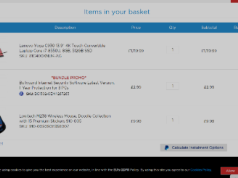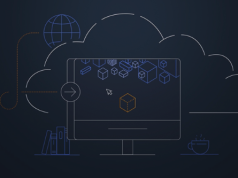I/O 2023: Here is everything Google revealed at its annual developer conference, including Pixel Fold and improvements to its AI chatbot Bard.
There were no surprises or aha moments during the opening day of Google’s I/O developer conference Wednesday, but that was almost intentional. Google clearly wanted to focus on underlying Generative AI technology that’s going to power its most popular products used by billions of people across the globe. In the two-hour-long keynote event, CEO Sundar Pichai and fellow Googlers tried to convince how Artificial Intelligence is at the center of Google’s core services and products, including new Pixel devices. There’s a lot to take from this year’s I/O, especially when Google is being forced to upgrade its products with AI features due to Microsoft’s surprise AI debut, and the looming pressure to remain the default search engine on Samsung and Apple devices.
Here are the key highlights to take away from Google I/O 2023 keynote.
- Google expands Bard to 180 countriesGoogle is opening Bard in 180 countries around the world, making its AI chatbot available to millions of consumers for the first time. Previously, Bard had limited access with availability limited to the US and the UK. The move allows anyone to try out Bard in English, Japanese and Korean languages. Ever since Bard was announced earlier this year, Google has faced the heat for not giving a public demonstration, unlike OpenAI’s ChatGPT. The conservative approach that Google has taken for Bard does put a question mark on the product itself but the company in its defence said that it wants to ensure that its products are responsible and safe before launching them. Bard is based on Google’s own language model, called LaMDA. Like ChatGPT, Bard lets users type queries and requests and is capable of answering detailed questions with a simple prompt. Last month back, Google enhanced Bard’s math, logic, and reasoning skills, as well as its coding capabilities. Yes, Bard has the ability to write and debug code in more than 20 different programming languages such as C++, Go, Java, JavaScript, Python and Typescript. This can be useful for developers as well as first-time programmers. At I/O, Google announced that Bard would be “multimodal,” meaning beyond text, the chatbot will also show images directly from Google Images in responses. In addition, Bard will also gain the capability to show images using Google Lens when users type queries. Google also promised to bring its core Google apps and services including Maps, Sheets, Gmail and Docs more directly into Bard.
- 02PaLM 2At I/O, Google unveiled PaLM 2, a new large-language model that can perform a broad range of topics, including coding, reasoning, multilingual translation and natural language generation. PaLM 2 is trained on over 100 spoken word languages, making it PaLM 2 excel at multilingual tasks including nuanced phrases which require understanding ambiguous and figurative meanings of words, rather than the literal meanings like idioms, poems, and riddles. Because PaLM 2 is trained on a massive amount of math and science texts, including scientific papers and mathematical expressions, that has improved the model’s ability to reason which can be seen in solving puzzles. Google says PaLM 2 powers over 25 Google products behind the scenes. Last month, Google said its medical LLM called “Med-PaLM 2” can answer medical exam questions at an “expert doctor level” and is accurate 85 per cent of the time.
- 03Workspace AIGoogle has been adding AI-based features such as smart compose, smart replies and generating summaries on Docs for years in its Workspace apps and products. In fact, users have relied on its AI features in Workspace to help them write over 180 billion times in the past year alone. Just recently, Google added AI capabilities in Gmail and Docs in the form of a feature called “Help me write.” The tool allowed users to draft job summaries, reply to emails in a more professional manner and rewrite text. At I/O, Google said it is adding the same AI capabilities in Gmail and Docs on mobile. This means more people can now take advantage of generative AI and do things like rewrite emails in a particular style or tone on their smartphones. Google also plans to include automatic table generation in Sheets with a simple prompt, allowing them to create a custom table or tracker, including date and time to help them accomplish any project. Google has more than 3 billion users of Workspace.
- 04SearchGoogle is supercharging search with generative AI features with a brand-new product called “Converse.” This is not a ChatGPT-style system, rather the homepage looks like what it is today. But AI is at the core of existing search results. Essentially Converse synthesises search results from complex queries. The demo showcased how Converse could help with searching for a new bike to purchase. Interestingly, the search results show the phrase “Generative AI is experimental.” It is not clear when users will be able to access it or when it will be rolled out. However, Google does reveal that it will be available to Labs users over the “coming weeks,” and users can access it by tapping on the Labs icon in the Google app or in the desktop version of Google Chrome.
- 05Pixel FoldFor the first time, Google has launched a foldable smartphone, and it’s a $1800 device aimed at enthusiasts and premium consumers. The Pixel Fold takes the form and shape of a book-style foldable phone with two screens, just like Oppo Find N. The device is coming to the market with the cover display which will measure 5.79 inches, while the inner display will measure 7.69 inches. It is touted to be “the most durable hinge on a foldable” and is water-resistant. The Pixel Fold also gets Google’s Tensor G2, the same chip that launched in the Pixel 7 and Pixel 7 Pro last year. For years, the Pixel Fold has been a mystery but it finally arrives at a time when the smartphone market has seen its largest decline in history. But, on the flip side, the high-end smartphone market has been stronger than ever, especially in emerging markets like India. Google has no plans to launch the Pixel Fold in India anytime soon. That means if you have a budget of over a lakh for a smartphone, you will end up buying either an iPhone 14 Pro or a Galaxy Fold 4.
- 06Pixel 7aBut Google is damn serious about its ambitions to corner a premium mid-range market with the Pixel 7a in India. Announced at I/O, the Pixel 7a is essentially a less-expensive version of the Pixel 7, the company’s flagship smartphone from last year. The Pixel 7A has the same Tensor processor and design as the Pixel 7 but offers a slightly altered experience. The new model has been upgraded on all major metrics, especially on the camera side. It still features two rear cameras but both are upgraded to a 64 MP wide and a 13MP ultrawide lens. Google has a mastery of cameras – and the Pixel 7a will also deliver solid photography for the price. However, Google’s Pixel A-series phones are not more budget devices. Google is asking for Rs 43,999 for the Pixel 7a, which makes the phone a competitor to Apple iPhone SE and OnePlus 11R.
- 07Pixel TabletApart from two new Pixel phones, Google also showed the Pixel Tablet. The $499 Pixel Tablet is the first Google tablet since 2015’s one-off Pixel C. So in a way, Google has returned to the tablet market this year. The question is if Google has come fully prepared to take on Apple in the tablet market. While the jury is still not out on how Google will fare in the competitive tablet market, the Pixel Tablet does seem promising. Unlike Apple or Samsung, Google has taken an alternative approach to the tablet market. On the surface, the Pixel Tablet looks like any other slate-looking tablet but comes with a wireless dock that functions as both a charging station and speaker. This will allow users to use the tablet as a smart display, similar to the Amazon Echo Show. The concept of a “family tablet” that can be used in different ways is a clever strategy but a lot will also depend on how Google tweaks the software experience.








